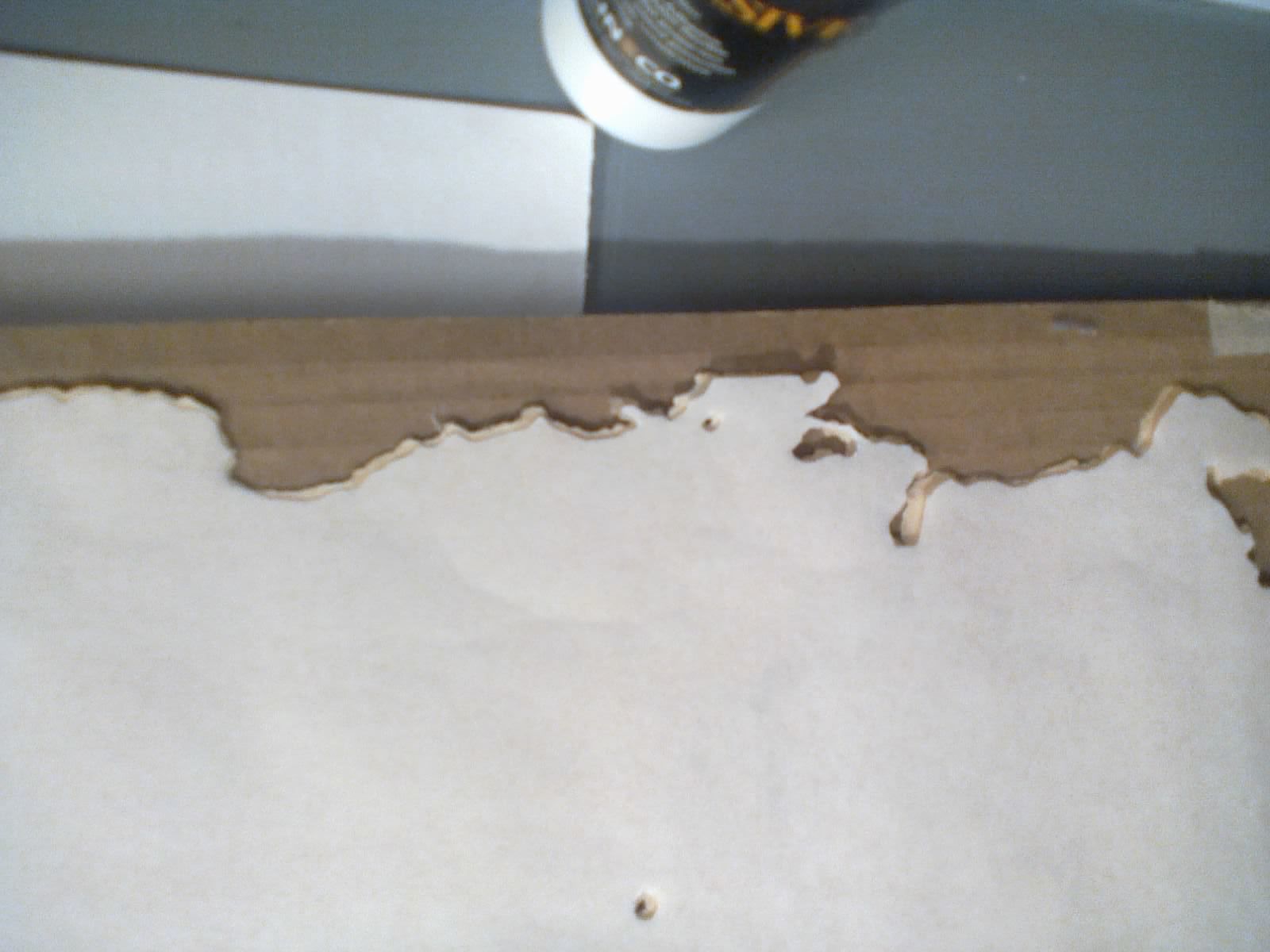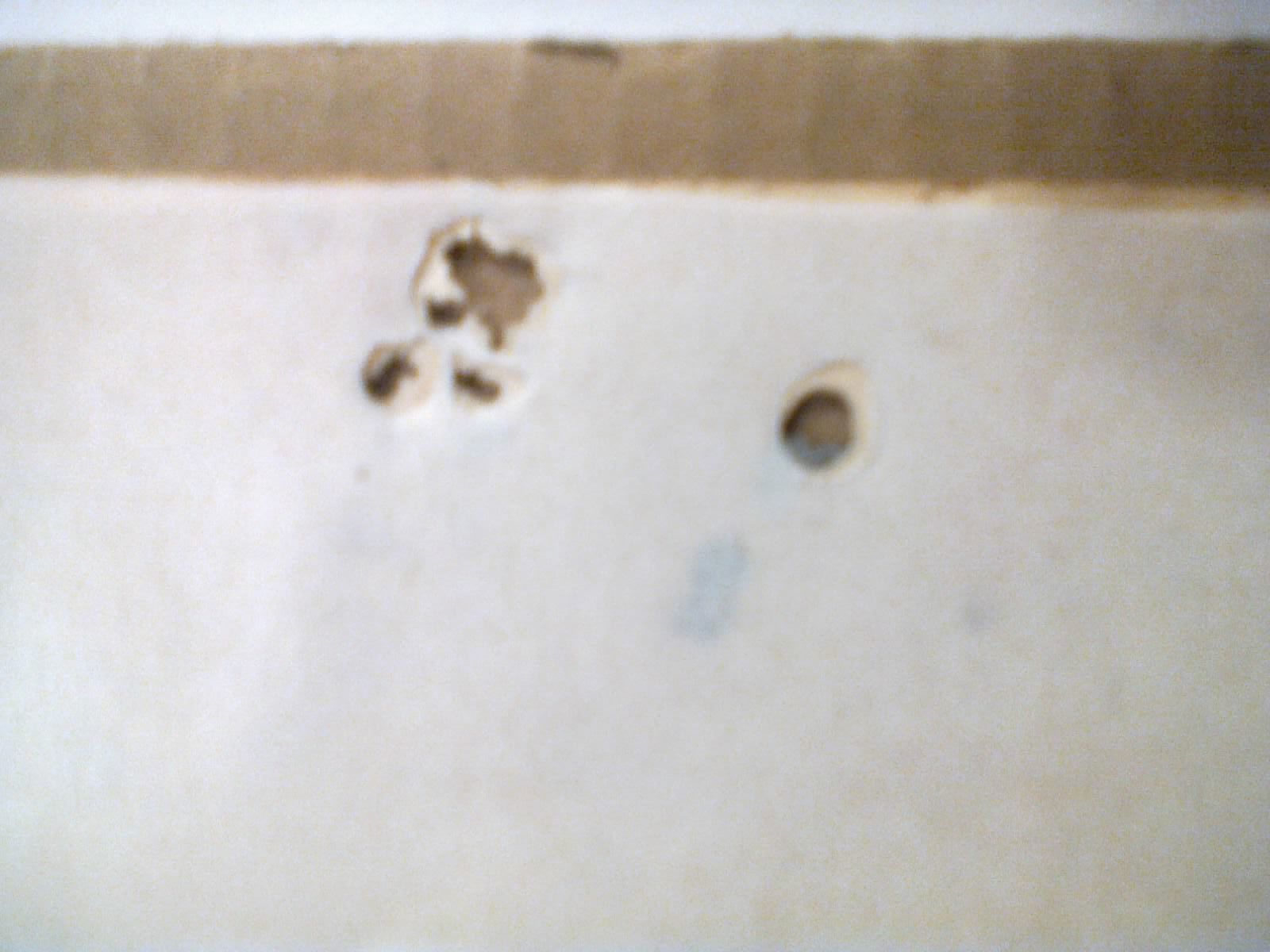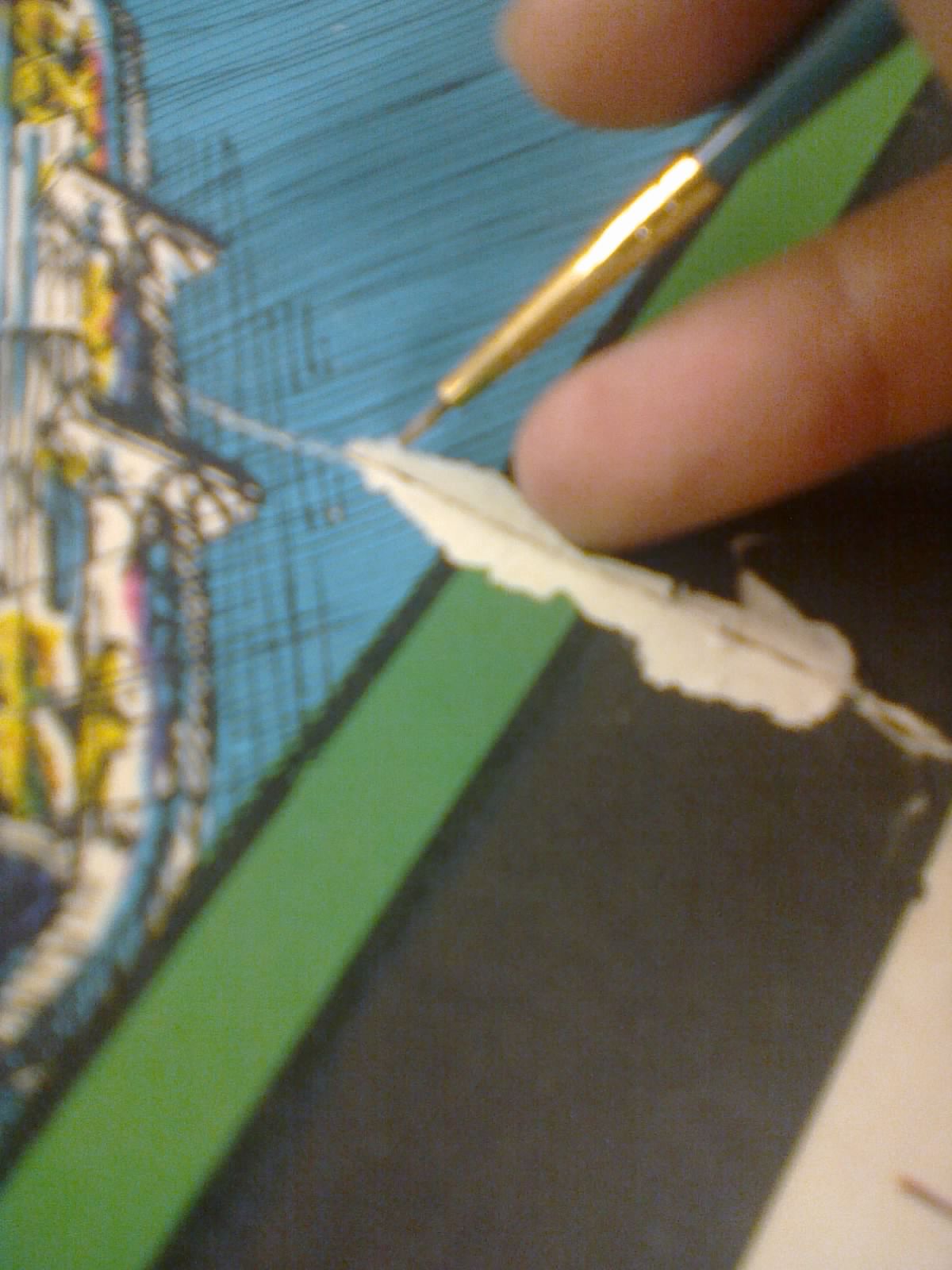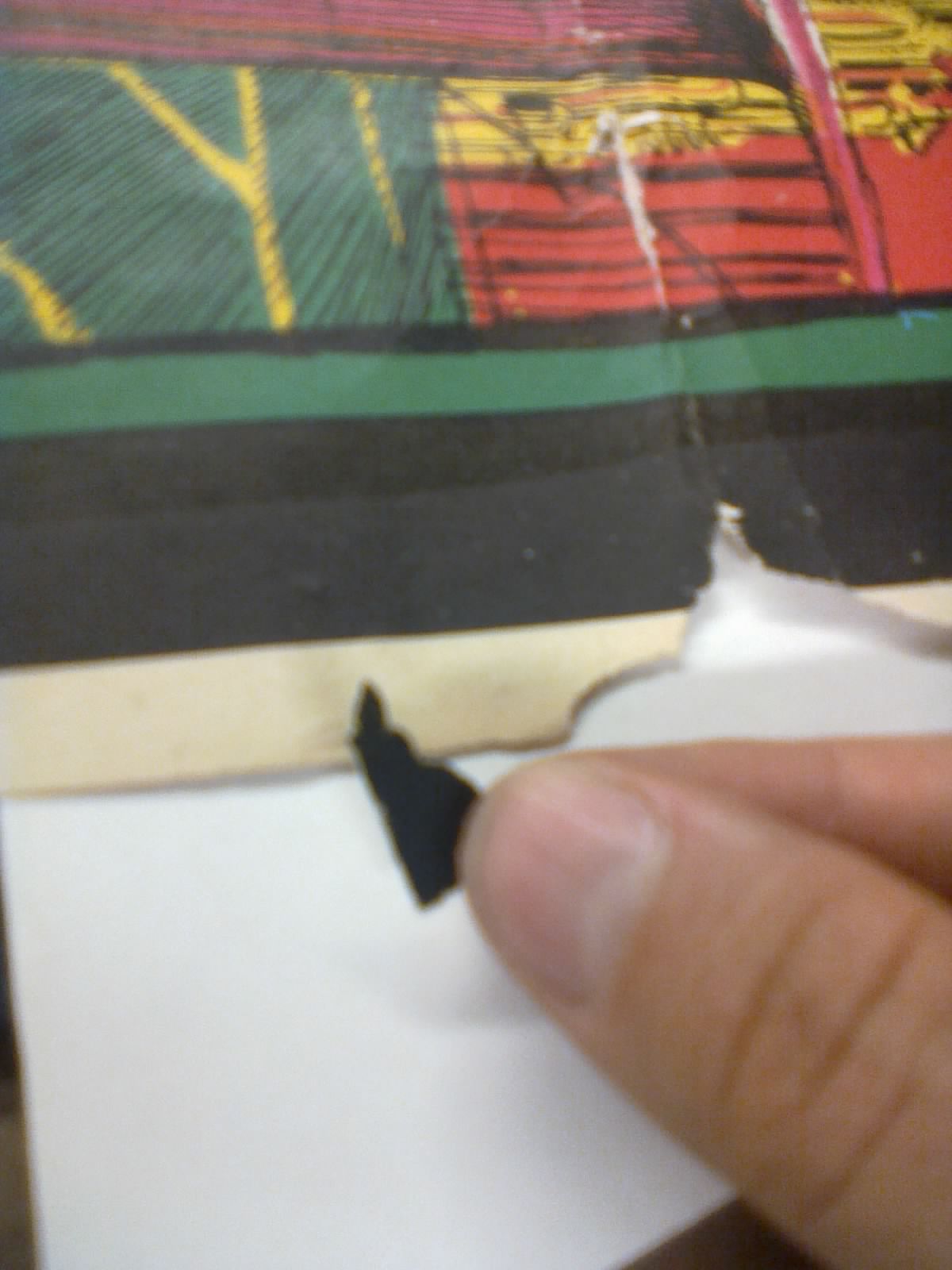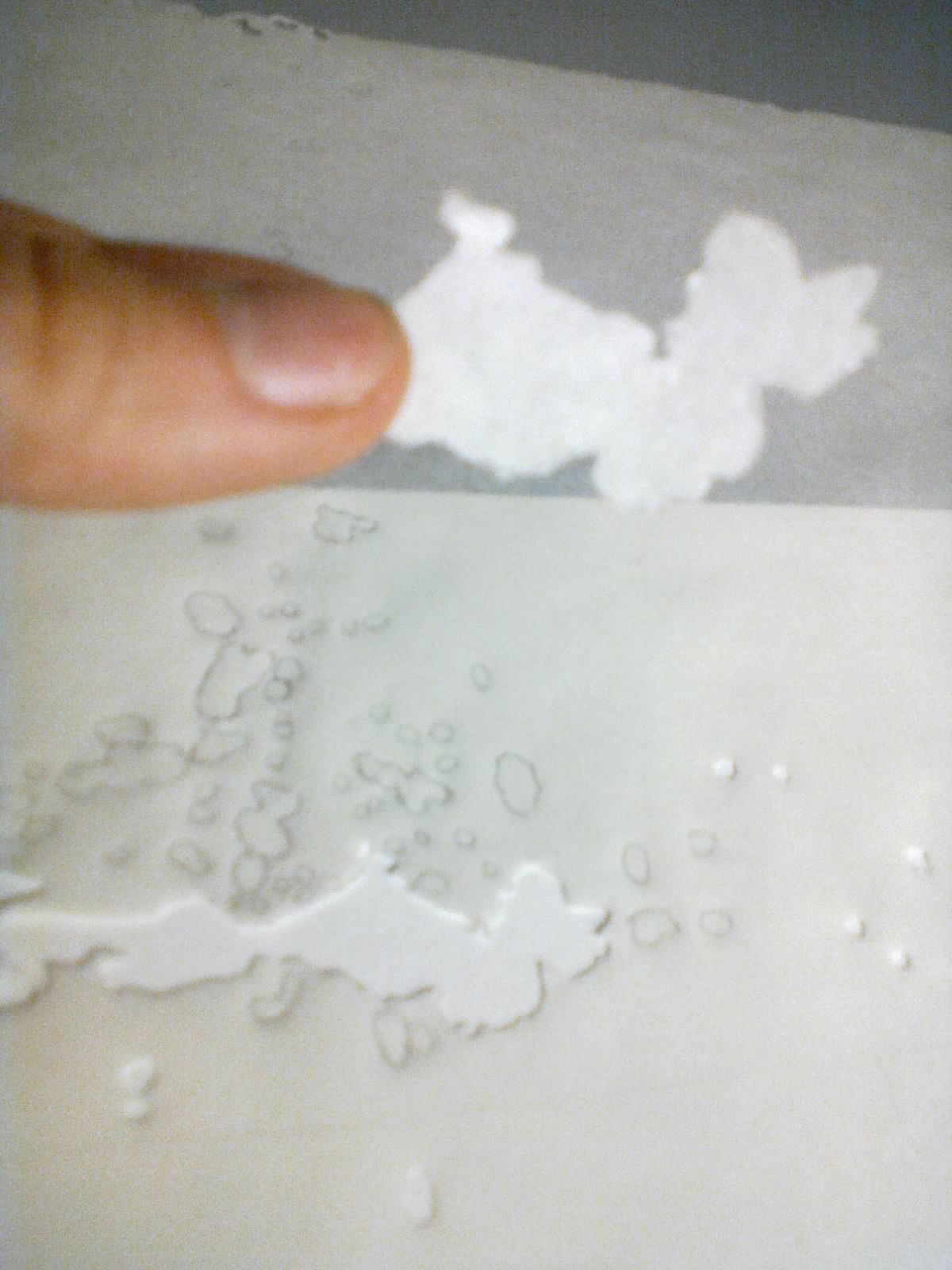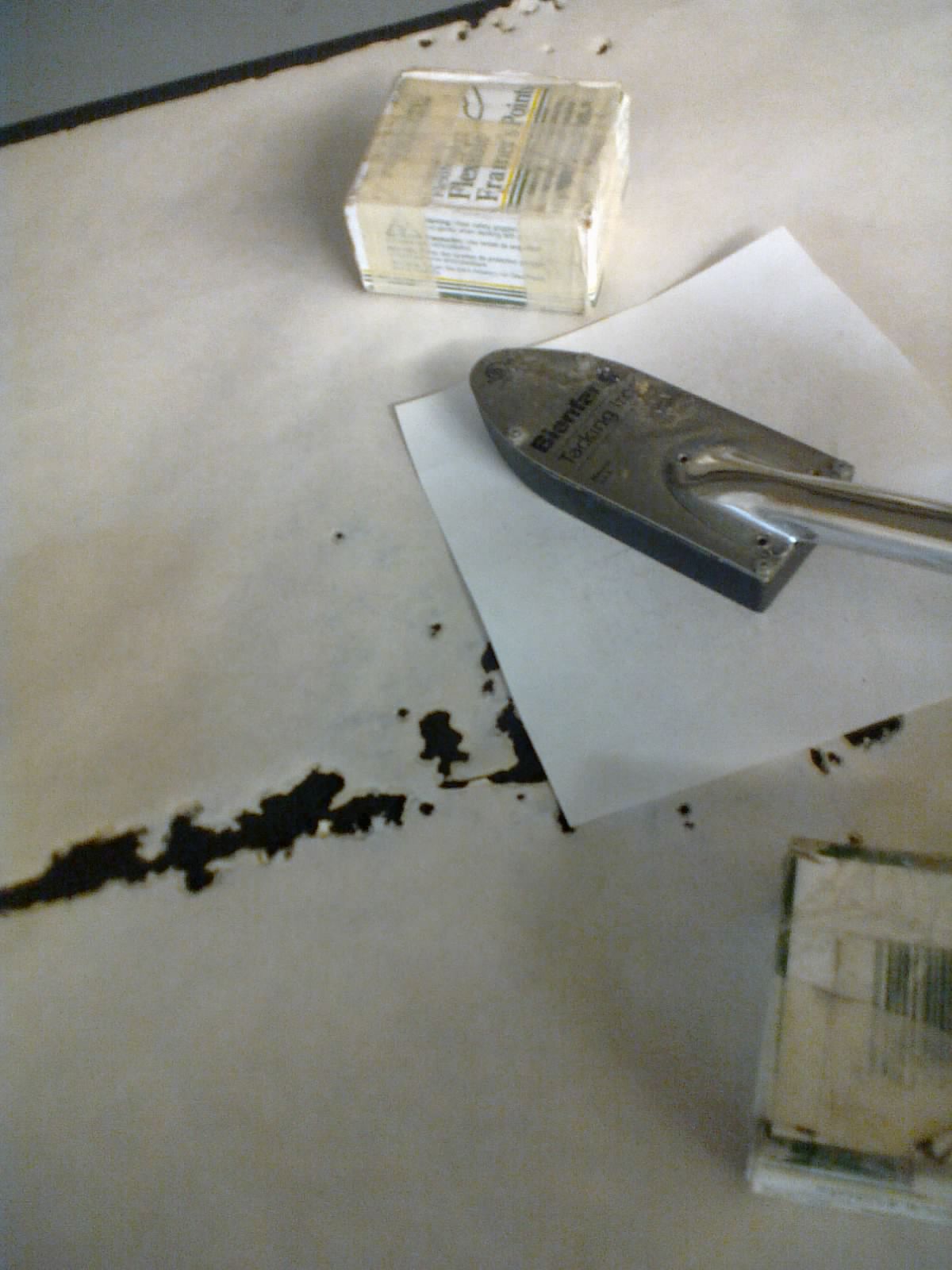THIS IS YOUR BRAIN ON PSA
Losing a loved one is never a welcome experience, and the heirlooms they pass on to those who survive them can never adequately fill the void they leave behind. However, it is a very lucky person indeed to be left with an heirloom so eccentric and unusual that it immediately conjures their loved one's unique spirit in an irreplaceable way. This customer approached me rather stealthily while I was doing routine maintenance on the computer. He cautiously presented the service he was in need of, which involved a great deal of patience and perseverance. He was pleasantly surprised by my enthusiasm at the prospect of being commissioned to employ my ocd in a repair/preservation project. I encouraged him to bring his treasure trove to the shop so I could get a better look.
This customer had been bequeathed a large stack of dry rotted, insect eaten, slightly mildewy, PSA themed black light posters that had been stored folded in an attic for several decades. Bits of poster readily flew off like florescent fall leaves, several of which had been retrieved and stored in an envelope. When he finally came in with the entire stash, my assistant and I scrambled to extend our surface area with floor model tables and foam core scraps so that we could lay them all out at once to take inventory. Each folded poster had to be gently coaxed open and measured. The folded edges suffered the most damage, and unfurling them revealed a paper snowflake of brittle constellations and majestic rugged canyons, an entire landscape of decomposition.
NOTE: I appear to have misplace the pictures of the actual black light posters, but I assure you they are ridiculous, stunning monstrosities. I will attempt to acquire them and post them here for you to marvel at.
After much deliberation, we settled on the approach that would yield the best results for the least amount of money. Each poster would be drymounted to a black, acid-neutral foam board and fit into a readymade frame measuring slightly larger than the poster so the ragged edges could have a margin of breathing room. How I was to accomplish this was the really tricky part.
Drymount paper looks similar to white wax paper or glassine, and is coated on both sides with a heat-activated adhesive. Unfortunately this would be visible through the holes, especially against the black foam core. Spraymount wasn't going to work on these pieces because the spray would have either discolored the edges of the holes or blown chunks out of place, and if any part stuck even for a moment on the work surface there was further risk of damage. So I resigned myself to the task of gently flipping each piece face down, cutting a sheet of drymount paper slightly larger than the piece, weighting the paper down to keep it from sliding out of alignment, and tracing with a well sharpened #2 pencil every little hole, every jagged edge, as accurately as I could manage. Then I took that drymount paper and cut out every little hole and jagged edge with an exact-o blade. Aligning all the holes and tacking the paper back in place with a low heat tacking iron, I gently flipped the piece facing up and attended to any flyaways with acid free glue and a tiny brush. In some areas the original overlap of the poster fibers had to be tweezed out like a zipper in order for inked areas to match up again. I matched the chunks that had been collected with the posters they flew off of, and at various intervals of this entire process did some combination of gluing and drymount tacking, either with separate drymount paper or included with the larger body of paper.
Once a piece looked as good as it was every going to get, I positioned it in the center of it's corresponding foam core and tacked it in place. I then put it at a lower than usual heat setting in the drymount press in order to lessen the amount of drying out the posters might suffer. Each piece came out stable and ready for framing. Regular glass conducts moisture, so because we were not inserting plastic spacers to lift the glass off the artwork, I made sure we went with plexi glass which is inert and relatively safe for direct contact. The customer was also planning to ship some of these posters, so plexi glass was also the safer light weight option.
I believe there were about 15 pieces all together, so the whole project was rather time consuming. The customer was very happy with the results, and he was able to share these mesmerizing relics with his family.




